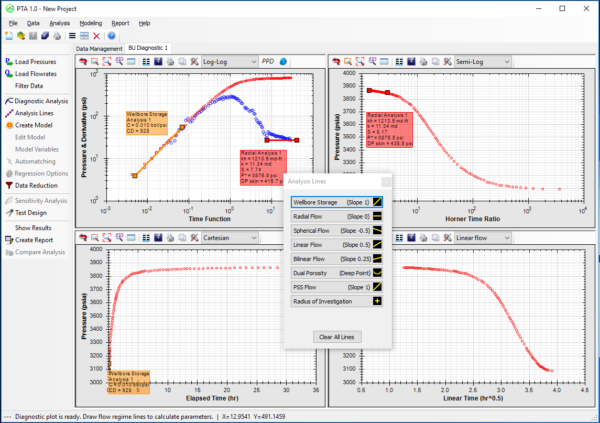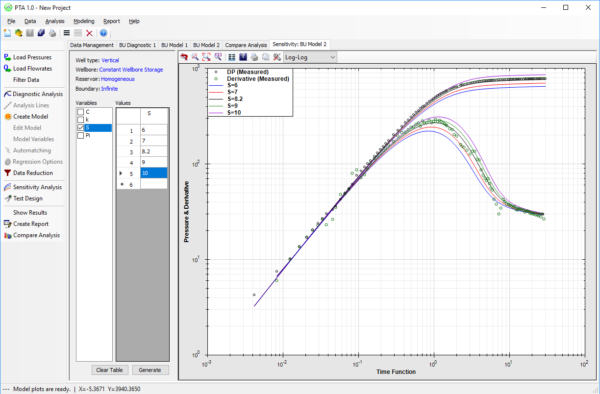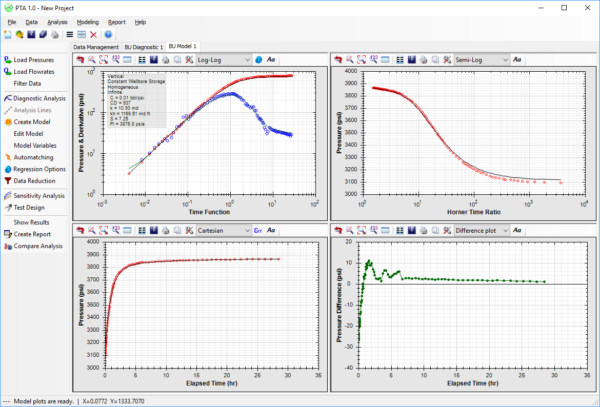PTA was designed and developed for interpretation of pressure build-up, drawdown, fall-off and backpressure tests. Compared to existing expensive well test analysis packages, PTA has a simple but effective graphical user interface with interactive plots and report generation modules. The calculations and results of PTA are comparable with other industrial software commonly used such as Fekete/IHS Welltest and Kappa Saphir.
PTA - Well Test Data Analysis
PTA has a simple but effective graphical user interface with interactive diagnostic plot of pressure, semi-log derivative, and primary pressure derivative. A variety of specialised plots including semi-log, linear, bilinear, spherical and Cartesian plots are also available. A fluid PVT property calculator is included to provide oil and gas fluid properties.
Both modern and classical analysis methods are included in order to have a more confident well test analysis. The software is based on pressure derivative plots, but conventional methods such as type curve matching and straight line analysis are available as well.
Some features of PTA are:
- Easy Data Management
- Diagnostic Analysis Options
- Model Selection Wizard
- Sensitivity Analysis
- PVT Properties Calculations
- Test design
- Deconvolution algorithm of removing the wellbore storage effect
- Ability to load, plot and analyse large data sets with up to 300,000 points
- Gas back-pressure, isochronal and modified isochronal analysis
- Simplified c-n and LIT analysis for back pressure tests
- Logarithmic and linear data filtering
- Quick estimation of distance to boundaries and faults
- Estimation of the angle between two intersecting faults
- Oil and gas wells IPR plots
- Simple report generation
- Inserting annotations and comments in any plot
- Smoothing pressure derivative curves
- Multiple specialised line of the same type
- Rate dependent (non-Darcy) skin calculation
- Easy export of plots and data to other programs such as Microsoft Office
- Comparing several analyses and models



